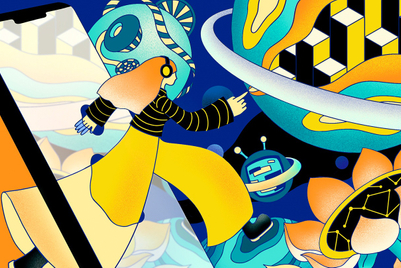
Much has been written about the metaverse recently – or rather about the various virtual and gaming worlds, the VR and AR experiences, that are coalescing into the metaverse.
So why one more?
First, to have a handy, pithy checklist outlining the five potential opportunities for marketers. The metaverse is still finding its feet, and I’m not trying to enthuse you to go all in; however, this framework can help you decide whether it’s right for you and your audiences – now or in the future – and, if so, to what end.
The second reason is I have some history here. Ten years ago, the company I was at was an early mover in this space; we created, for instance, a sprawling Moonbase for the retailer Game within PS3’s virtual world (we had to build the Moon first). Avatars could hang out, chat, play the games we created, and generally experience a sixth of the gravity they encountered in your average Game store.
Much has changed since then, but the five ways brands and marketers might benefit are the same. So, without further ado…
1. Extended reach – Even if a brand’s presence is fairly prosaic (virtual billboards anyone?) it can reach a growing number of people, including the difficult to reach. Gaming and AR have become mass market during the pandemic. Younger audiences are famously difficult to reach in traditional channels, and are notorious ad avoiders and lightning-fast scrollers; the metaverse gives a way of reaching them in a high attention environment. Also, while the metaverse is not yet a single world, brands can straddle various worlds with a single initiative, increasing reach. We are currently working with a fashion brand, dropping its new virtual accessory into multiple worlds simultaneously – and, thanks to the blockchain, if someone’s bought it in Decentraland, they can also store it in their virtual wallet and use it in Fortnite.
2. Brand immersion – With attention scarce, the metaverse means we can fully occupy a person’s mind; not just high attention advertising, but a 360-degree brand experience, woven into the fabric of a world rather than intruding on it, encompassing visual, audio and (increasingly) touch. This is about creating brand spaces replete with semiotics and multi-sensory associations; and also what plays out there. People will variously want to have fun, express themselves, win and so on – brands that help them do so will be welcome citizens. The Game Moonbase, and the mind-blowing things within it, was a brand experience impossible to replicate in the stores on planet Earth.
3. Avatar advocacy – The metaverse is social, and many of its uses will be outward facing: expressing yourself from behind the comforting façade of your avatar, and, in turn, being influenced by the contexts and people you encounter. Given this, brands can align with a new set of influencers: the most influential avatars. These might be authentic versions of the humans behind them. But also, in line with the rise of fictional influencers on social platforms such as Lil Miquela, many will push the fiction – with fantastical appearances, virtual occupations and colourful back stories. Last year, Monkey Shoulder hosted an after party for the first festival in Decentraland, including DJs, NFT drops and more; a space where people could be influenced by the cool, exclusive event and the people within it. Avatar influencers will rise up to lead virtual fashion shows, be the first to try virtual goods, and open virtual clubs; and, like in the real world, will be open to brands that build their fame, increase their wealth, or amplify their cause.
4. Sales channel – The metaverse is a brand new route to market, and for many categories has the potential to combine the best of on- and offline commerce. If you’re buying a new car you have the online benefits of home browsing, and toggling through endless colours. But you can also view it from all directions in minute detail, just like in the real world; there will even be some benefit from taking it for a virtual spin. Chevrolet built its new car in the Unreal Engine – so this is already happening. Ecommerce experiences that have flourished during lockdown will find the next stage of their evolution in the metaverse – from trying on virtual clothes, to walking into a potential new home that’s yet to be built in the real world.
5. Launching metaproducts – Finally, as well as a sales channel for existing products, the metaverse can create new revenue streams through virtual product lines, such as fashion brands tailoring virtual clothing. Some of these might be freebies (and so be purely about building brand), or low-cost prizes in promotions – but some will be genuine money makers; after all, huge gaming companies have been built on selling high margin virtual goods. Added to this is the rise of NFTs – for example, Antwerp HB created a range of beautifully crafted NFT diamonds. So, there are two approaches to monetising virtual goods: the infinitely replicable virtual goods, you can sell by the bucketload; or the scarcity of premium, high value NFTs.
So, there ends the five ways. And maybe in a couple of months my avatar can present this article from Campaign’s swanky new offices on Decentraland’s Moon.
Matt Willifer is chief strategy officer at Carat UK


.jpg&h=334&w=500&q=100&v=20250320&c=1)

.jpg&h=334&w=500&q=100&v=20250320&c=1)

.jpg&h=334&w=500&q=100&v=20250320&c=1)



.png&h=334&w=500&q=100&v=20250320&c=1)







.png&h=268&w=401&q=100&v=20250320&c=1)
